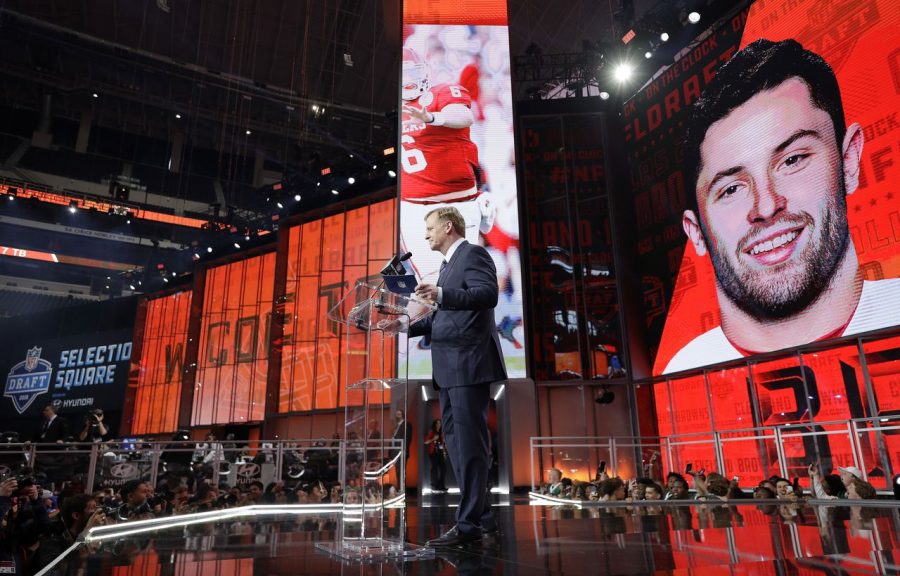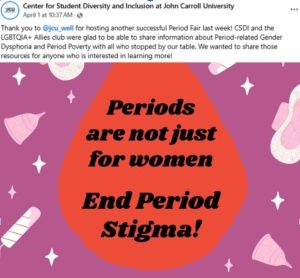NFL Draft in Cleveland could determine how quickly sports (and life) get back to normal again
“Commissioner Roger Goodell speaks after the Cleveland Browns selected Oklahoma’s Baker Mayfield as their pick during the first round of the 2018 NFL Draft.” AP
Apr 27, 2021
I think there is light at the end of the tunnel.
Sports really haven’t looked the same since Rudy Gobert of the Utah Jazz tested positive for the coronavirus on March 11, 2020. As COVID-19 continued to ravage through China and Italy, the emergence of the virus in the United States didn’t hit home until that night.
Since then, sports have been different. After a pause of approximately three months, the NBA and NHL concluded their seasons in bubbles. The MLB played an entire regular season without fans. Somehow, the NFL grinded through 2020 without having to cancel a game. A progression of baby steps means finally getting back to normal — at least I think it might.
From Thursday, April 29, to Saturday, April 31, the NFL Draft is being held in downtown Cleveland. According to the NFL, 50,000 fans are expected to attend each day’s festivities, which take place along the lakefront where FirstEnergy Stadium, the Great Lakes Science Center and the Rock & Roll Hall of Fame are located. Of course, masks are required, and social distancing is mandated. But 50,000 people in a half-mile radius is a big deal.
The Cleveland Indians recently increased their capacity to 40% at Progressive Field. The Texas Rangers allowed 38,232 fans to enter Globe Life Field on opening day. Then, this past weekend, UFC 261 held the first full-capacity indoor sporting event in over 13 months. The venue, VyStar Veterans Memorial Arena in Jacksonville, sold out its maximum capacity of 15,000 fans.
Meanwhile, as of Friday, April 23, the current seven-day moving average (amount of positive tests accumulated over a week, divided by seven) of daily new cases (62,596) is down 10.1% compared to the previous seven-day moving average (69,614), according to the Centers for Disease Control and Prevention. Better yet, compared with the highest peak on Jan. 8 (249,436), the current seven-day average decreased 74.9%. Currently, 29% of the United States is fully vaccinated, with over 42.5% having received at least one dose, per Our World in Data.
For Ohio, the most recent seven-day average was 1,590 positive cases. That’s down from 12,529, the seven-day average positive cases from Dec. 8, according to The New York Times; that’s an 87.3% decrease in cases in less than four months. In Cuyahoga County alone, only 151 positive cases were reported yesterday. In addition, USA Facts reported over 3 million people have been vaccinated in Ohio, and at least 39% of the state has received at least one dose.
These are all big steps toward returning to normal — most importantly, sports getting back to normal. The city of Cleveland will attempt to take a big leap in the right direction for the sports world this week.
Ohio has been one of the most optimistic states in getting sports venues back to normal. In early March, Gov. Mike Dewine said he is hoping for full capacity at Progressive Field by July 4. The number of positive tests following the NFL Draft, in Cuyahoga County and ultimately in Ohio, will serve as a benchmark for determining what sports could look like from here on out.
Except, it isn’t just sports in Ohio, it’s across the United States.
If Cleveland and the NFL prove that a large crowd can gather in one confined space, other sports leagues and teams may follow their lead, increasing their capacity and limiting COVID-19 restrictions.
The question now is: Can it be done?
I think it can. The cases are decreasing, the vaccinations are increasing, and the draft is essentially being held entirely outside. I envision that it won’t be long before life, and sports, are back to normal. The next seven days will play a significant role in proving that it can be done. I look forward to the day when COVID-19 is in the loss column, and we can all win our lives back — and that includes sports too.













